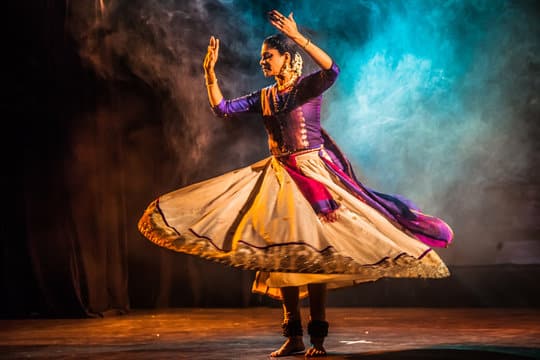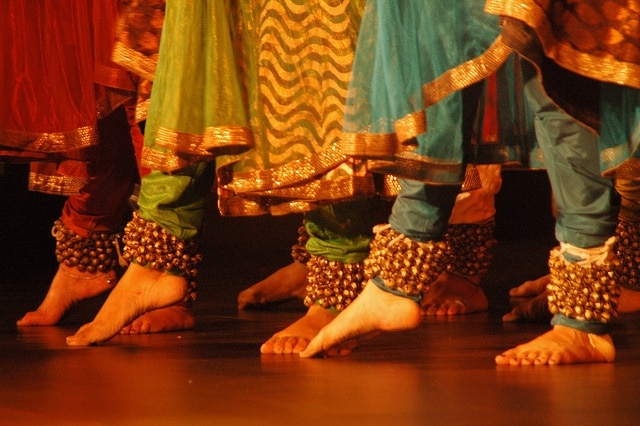dance style
Kathak
Kathak is a traditional Indian classical dance form that originated in the northern regions of India. It is characterized by its intricate footwork, graceful hand movements, and expressive storytelling. Kathak dancers often perform in colorful costumes and bells on their ankles, known as ghungroos, which produce rhythmic sounds as they dance. The dance form combines elements of rhythm, melody, and emotion, and it has evolved over centuries to include both traditional and contemporary styles. Kathak often involves storytelling through dance, using gestures and movements to convey narratives from mythology, history, and everyday life. It is celebrated for its dynamic energy, rhythmic complexity, and ability to evoke deep emotions through its performances.
Courses Offered in kathak

diploma
(Prarambhika, kovida)
- For Age Group of 4 to 15 years
- SCC Grace Marks
- Cultural Quota (Helpful in Admission of Higher studies)
- Batch size (25-30)

advanced diploma (advance / master)
- For Age Group of 15 years +
- One on one sessions
- Job opportunities as Instructors/Masters of Classical Arts
- Batch size (1-5)

degree
(B.A. / M.A)
- Pursue carrier in Classical Arts
- Part time
- Job opportunities as Instructors/Masters of Classical Arts
- Batch size (25-30)

diploma
(Prarambhika, kovida)
- For Age Group of 4 to 15 years
- SCC Grace Marks
- Cultural Quota (Helpful in Admission of Higher studies)
- Batch size (25-30)

advanced diploma (advance / master)
- For Age Group of 15 years +
- One on one sessions
- Job opportunities as Instructors/Masters of Classical Arts
- Batch size (1-5)

degree
(B.A. / M.A)
- Pursue carrier in Classical Arts
- Part time
- Job opportunities as Instructors/Masters of Classical Arts
- Batch size (25-30)
Frequently Asked Questions
Some of your queries
Kathak is a classical dance form that originated in northern India. It is known for its intricate footwork, graceful movements, and expressive storytelling through dance.
Kathak’s origins can be traced back to the traditional storytelling practices of ancient India. It evolved as a form of entertainment in the royal courts, blending Hindu and Muslim cultural influences.
Kathak is characterized by rhythmic footwork, intricate hand gestures (mudras), fluid spins (chakkars), and expressive facial expressions. It often includes both fast-paced and slow, graceful movements
Musical accompaniment, including tabla (drums), sarangi (string instrument), and vocalists, plays a crucial role in Kathak performances. Dancers synchronize their movements with the rhythms and melodies of the music.
Kathak has several gharanas, or stylistic lineages, each with its own unique approach to technique and presentation. Some well-known gharanas include Lucknow, Jaipur, and Benares.
Kathak dancers often use abhinaya (expressive storytelling) to convey narratives from mythology, folklore, and historical events. This involves facial expressions, gestures, and body movements to communicate emotions and characters.
Yes, Kathak can be learned by people of all ages and backgrounds. While starting at a younger age can provide a strong foundation, individuals with dedication and passion can begin learning at any point
Kathak costumes typically include colorful flowing dresses (lehengas) for females and embroidered kurtas and dhotis for males. The dancers also wear elaborate jewelry, including anklets (ghungroos) that produce rhythmic sounds.
Yes, learning Kathak can improve physical fitness, balance, coordination, and flexibility. It also has mental and emotional benefits, as it requires concentration, creativity, and expression.
Kathak can be performed both solo and in group settings. Group performances often involve coordinated formations, intricate patterns, and synchronized movements, showcasing the dancers’ unity and skill.
